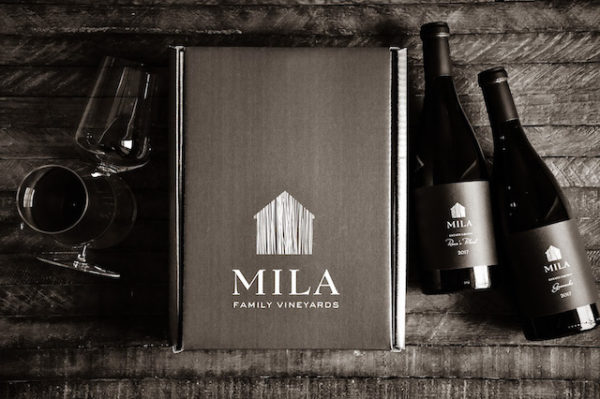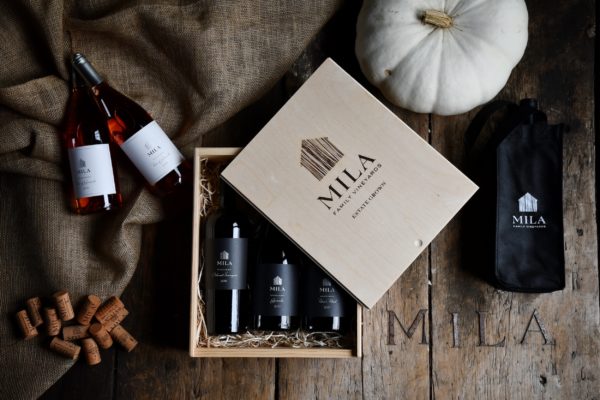
The first snow of the holiday season. November 17, 2020.
feeling thankful for home
Dear Friends,
California is pleasant during the holiday season, but it’s just different. Sure, it’s fun to see someone surfing in a Santa suit, but we’d rather be home in Ohio, watching the coloring of the leaves in the fall and first snowfalls of winter.
The weather in Sonoma, by contrast, can be unpredictable and springlike this time of year: A week of rain, then a burst of sunshine and 75-degree heat.
Our grapes love the Mediterranean climate of Sonoma, but we love being home for the holidays, gathered around the hearth, feeling grateful for our community of family and friends all over the world.

from loretta’s sonoma table:
bison shepherd’s pie
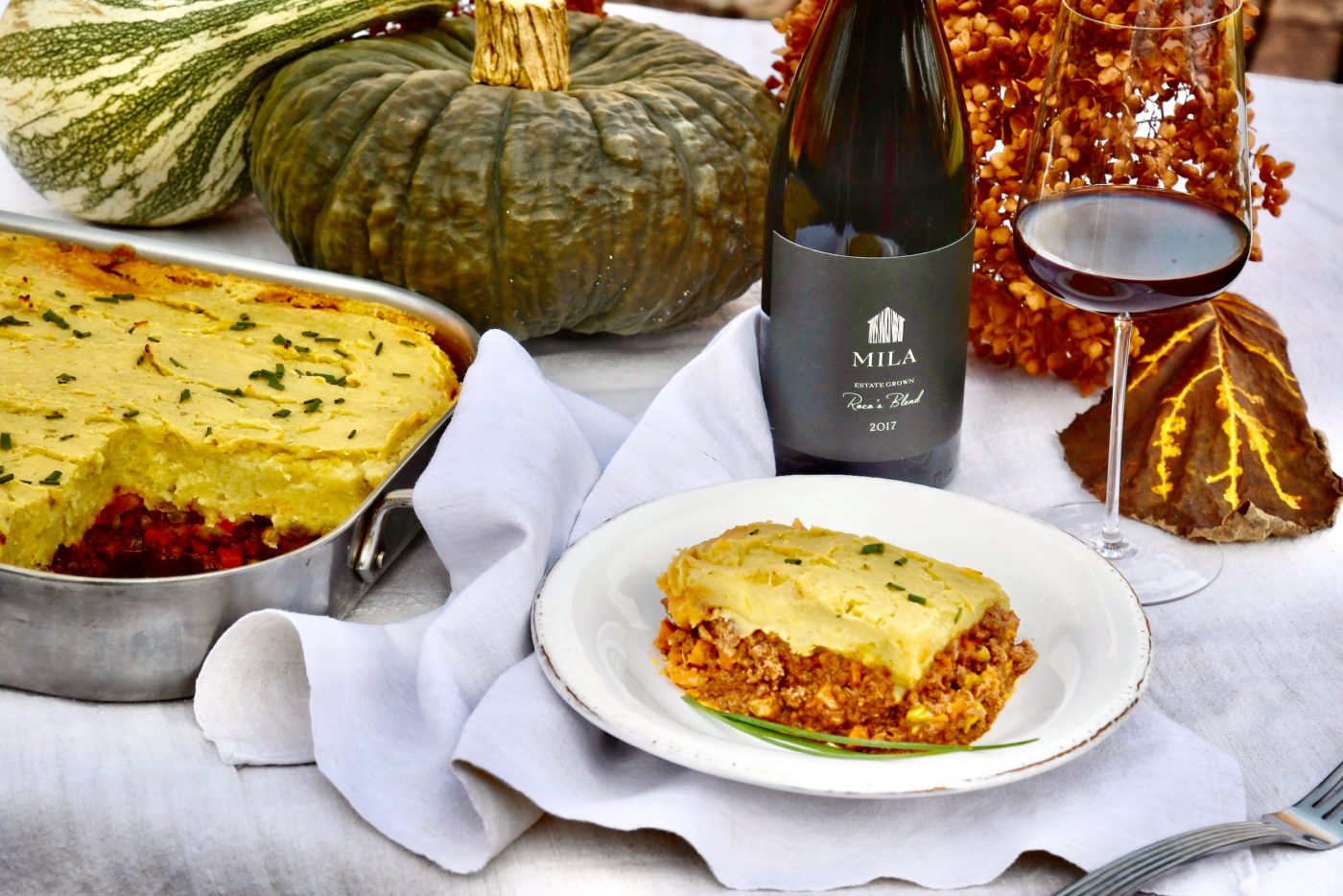
On a chilly late-autumn afternoon, fifteen or so years ago, I was pacing around the kitchen wondering aloud what to cook for dinner. “You know what would be nice this time of year?” Michael asked brightly. “A good old-fashioned Shepherd’s Pie!”
Having grown up in an Italian household, I was bewildered by this request. I had never tasted this strange British conglomeration of mixed meat, peas, and mashed potatoes. Intrigued, I started testing recipes.
Historically, Shepherd’s Pie was a way to use up leftover meat, I learned. So, if the point was to make yesterday’s dinner taste like a whole new meal today, why were all these recipes so bland? I felt that I could improve upon the original with my own take.
Traditionally, the meat in Shepherd’s Pie was lamb or mutton—thus the title. I couldn’t find truly fresh, high-quality ground lamb in my area at the time, but my butcher had access to excellent bison—also called American buffalo—meat, which turned out to be just what this recipe needed. Bison meat is lean, yet its flavor is rich, and it works beautifully in this casserole, turning an old English recipe into a new all-American one.
My family loves this dish, and anticipates it every autumn and winter. I serve it with a big green salad and our Roco’s Blend.
For a printer-friendly version of the following recipe, click here: RECIPE
Ingredients
7-8 cups mashed potatoes (regular or white Jersey sweet potatoes)
3-4 medium-to-large carrots, diced
1 cup diced yellow onion
6 tablespoons olive oil, divided
4 teaspoons salt, divided
1 bag frozen peas
1 can (6 ounces) tomato paste
3 pounds ground bison
2-3 tablespoons ketchup
3 tablespoons Worcestershire sauce
2 tablespoons cornstarch, mixed with 1/4 -1/3 cup room-temperature water until dissolved
Directions
Prepare mashed potatoes according to your favorite recipe and set aside. Preheat oven to 375° F.
Sauté carrots and onions over medium to medium-high heat in 3 tablespoons of olive oil until tender (6-7 minutes). Add 2 teaspoons salt and frozen peas and sauté for another 3 minutes. Add tomato paste to veggie mixture, blend well, and set aside.
Sauté the ground bison with the remaining 3 tablespoons of olive oil until just cooked through. Season with remaining 2 teaspoons salt and add ketchup, Worcestershire sauce, and cornstarch mixture, continuing to sauté until sauce has thickened. Add vegetable mixture to meat mixture, stir until well blended, and transfer to an 11” x 14” baking dish or roasting pan. Layer your mashed potatoes evenly on top of mixture in pan.
Bake in preheated oven for 45 to 60 minutes, or until potato topping is golden brown. Allow to cool 5 mins before serving.
the solution to your holiday wine-pairing quandary!
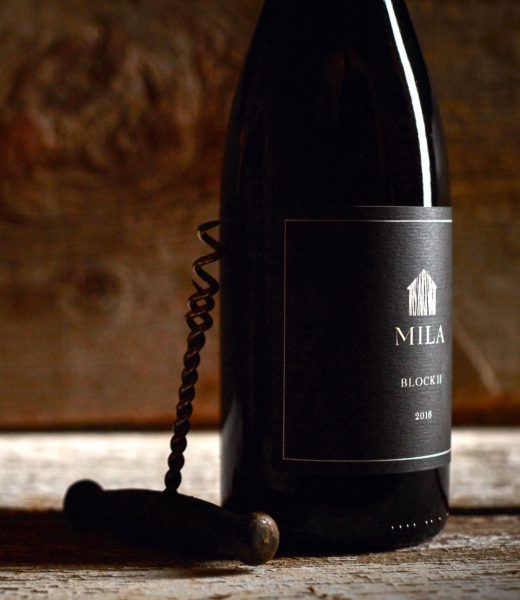
‘Tis the season for oven-roasted poultry, and every year, we hear from friends wondering which wine from their Mila collection they should serve with their Thanksgiving turkey or Christmas goose.
We recommend our medium-bodied Block II Grenache. Having done its élevage in neutral barrels, there isn’t a noticeable oak influence.
A well-crafted Grenache plays a role similar to that of cranberry sauce on the table, its pronounced acidity and bright red fruit notes providing contrast to savory roasted meats while also complementing side dishes like sweet potatoes. At the same time, this particular bottling is so versatile and that you can serve it with a Feast of the Seven Fishes.
notes from the cellar:
the secret secondary fermentation
Ah, November. After a busy harvest and crush, the last of the wine has been transferred from fermentation tanks into barrels. Time to relax.
Well, not exactly. Because a little-known fact about winemaking is this: Most wines go through not one but two fermentations. The primary fermentation, in a large cask or tank, does the heavy lifting of turning juice into wine.
But then, in barrel, wine starts to bubble and dance around again, usually in November. This secondary spontaneous eruption is called malolactic fermentation. It’s a natural process that turns sharp malic acid (think tart autumn apples) into mellow lactic acid (which is found in milk and yogurt).
We allow “malo,” or “ML,” as we say in the trade, to occur in all of our wines with the exception of our rosé. Crisp whites and rosés are typically chilled or treated with sulfur to discourage malolactic fermentation because these wines are prized for their crisp acidity. In most reds and full-bodied white wines, ML is allowed to proceed because it smooths out the wine’s edges, softening the texture.
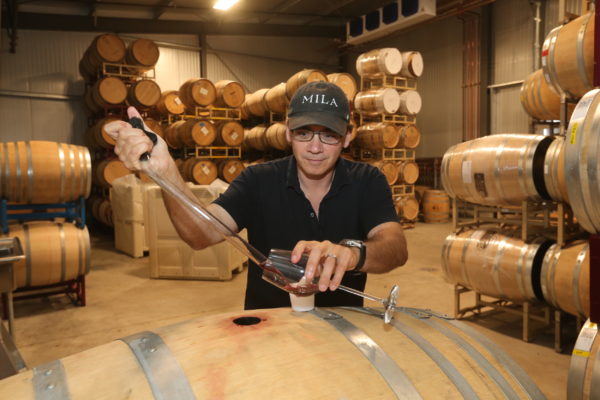
During élevage, we continue to top off our barrels once a month, as evaporation takes an “angel’s share” of liquid. We also taste the wine and assess how it’s evolving.
In our cellar, as soon as malo has completed, we top off the barrels—filling them to the top with wine so as to minimize oxygen exposure—and treat them with a minute amount of sulfur to avoid spoilage. Then, we set them aside to rest.
The next 18 to 30 months (in the case of our wines) is called élevage—a French term meaning “rearing,” or “raising.” It’s as though the wine is maturing from childhood to adulthood during this time in the barrel, growing complex and nuanced.
get your holiday shopping ☑
Order by December 9 for delivery by Christmas
Mix and match your favorite Mila wines and send holiday cheer to family, friends, clients, and colleagues! Our three-bottle gift set comes in an attractive wood wine box; our two-bottle set is presented in a beautiful black box.
With any questions or for ordering assistance, please contact
Loretta at 216-952-1550 or loretta@milafamilyvineyards.com or
Shelley at 440-915-5748 or shelley@milafamilyvineyards.com
